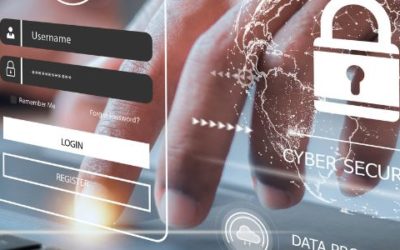Separate Guest Wi-Fi Networks: A Crucial Cybersecurity Practice
If your office welcomes clients, patients, or visitors who ask for Wi‑Fi access, it’s critical to set them up on a separate guest wi-fi network—ideally using VLAN technology. It’s not just friendly Wi‑Fi etiquette; it’s key cybersecurity hygiene for protecting sensitive business systems and private data.
Why You Need a Guest Network
- Boost Security Through Isolation
A properly configured guest wireless network keeps visitors and potentially unsafe devices off your internal systems. According to Canada’s cybersecurity agency, segregating guest Wi‑Fi prevents malware or compromised devices from spreading onto your primary network en.wikipedia.org+15cyber.gc.ca+15bitdefender.com+15. This logical separation ensures outsiders can’t reach sensitive resources like file servers, databases, or VoIP systems. - Enforce Traffic Control and Bandwidth Management
Unauthorized downloads and streaming by guests can cripple employee productivity. With a dedicated guest network, you can throttle speeds, limit bandwidth, or even schedule off-peak guest access—keeping your business Wi‑Fi running smoothly. - Apply Customized Content Filtering
Guest traffic often poses greater web risks. You can reduce exposure to malicious sites by routing guest traffic through a cloud-based web filter that blocks adult content, malware, ransomware, or phishing sites. Updated definitions help keep you ahead of emerging cybercrime trends. - Offer Convenience Without Compromising IT Integrity
Guests expect connectivity today—it’s non-negotiable. But you don’t want them stumbling into private documents or internal servers. A guest SSID satisfies their needs while maintaining full control over your corporate network.
How to Properly Set Up a Secure Guest Network
If you’re offering public or visitor Wi‑Fi, it needs to be isolated from your internal systems—period. Here’s what a secure setup looks like:
1. Use VLANs (Virtual Local Area Networks) to Segment Traffic
Modern firewalls and business-grade routers allow VLAN creation to separate internal network traffic from guest access. VLANs operate on the same physical hardware but act as isolated logical networks. Devices on your guest VLAN cannot discover or communicate with internal devices unless explicitly allowed.
💡 For example: your main office network might use VLAN 10, while guest Wi‑Fi lives on VLAN 20—with a firewall rule blocking all traffic from VLAN 20 to VLAN 10.
2. Broadcast a Separate SSID
Create a second wireless network (SSID) for guests. Name it clearly, e.g., “YourBusiness-Guest,” and secure it with WPA2 or WPA3 encryption. Avoid open guest networks—even if you’re using bandwidth restrictions.
3. Limit Bandwidth and Access Times
Use Quality of Service (QoS) settings or bandwidth throttling to ensure guest usage doesn’t interfere with business operations. If your business only operates during certain hours, restrict guest access accordingly.
4. Enable Client Isolation
Prevent devices on the guest network from communicating with each other. This stops malware or snooping tools from jumping from one guest device to another.
5. Apply DNS Filtering for Web Protection
Route guest traffic through DNS filtering tools like Cisco Umbrella, Cloudflare Gateway, or CleanBrowsing. These tools block unsafe or inappropriate content and provide basic protection from phishing, botnets, and malware.
6. Monitor and Log Guest Traffic
Even for guest users, traffic analytics can help identify anomalies or usage spikes that may point to abuse or attack attempts. Some tools even alert you if known malicious activity originates from your guest network.
Don’t Let a Weak Guest Network Become a Backdoor
A poorly configured wireless network is one of the most common and preventable cybersecurity risks for small businesses. Giving visitors convenient internet access shouldn’t come at the cost of exposing your internal systems to threats.
Setting up a separate guest network using VLANs, firewall rules, bandwidth controls, and DNS filtering doesn’t just improve security—it also protects your business’s reputation, keeps operations running smoothly, and ensures compliance with industry standards.
If you’re not sure how your current Wi‑Fi setup stacks up, or if you’re still sharing internal credentials with guests, it’s time for a review.
Let Network Computer Pros help you secure your wireless network—before it becomes a liability.
You might also like
The 5 Bad IT Symptoms Plaguing Your Business
Welcome to the Network Computer Pros technology clinic, where we diagnose and treat the bad IT...
IT Consulting: 6 Benefits of a Fixed Rate Model
IT consulting works best when costs are predictable and support is proactive. A fixed rate model...
Latest LastPass Scam: Everything you should know
Understanding and Protecting Yourself from the Latest LastPass Scam After a sophisticated...



